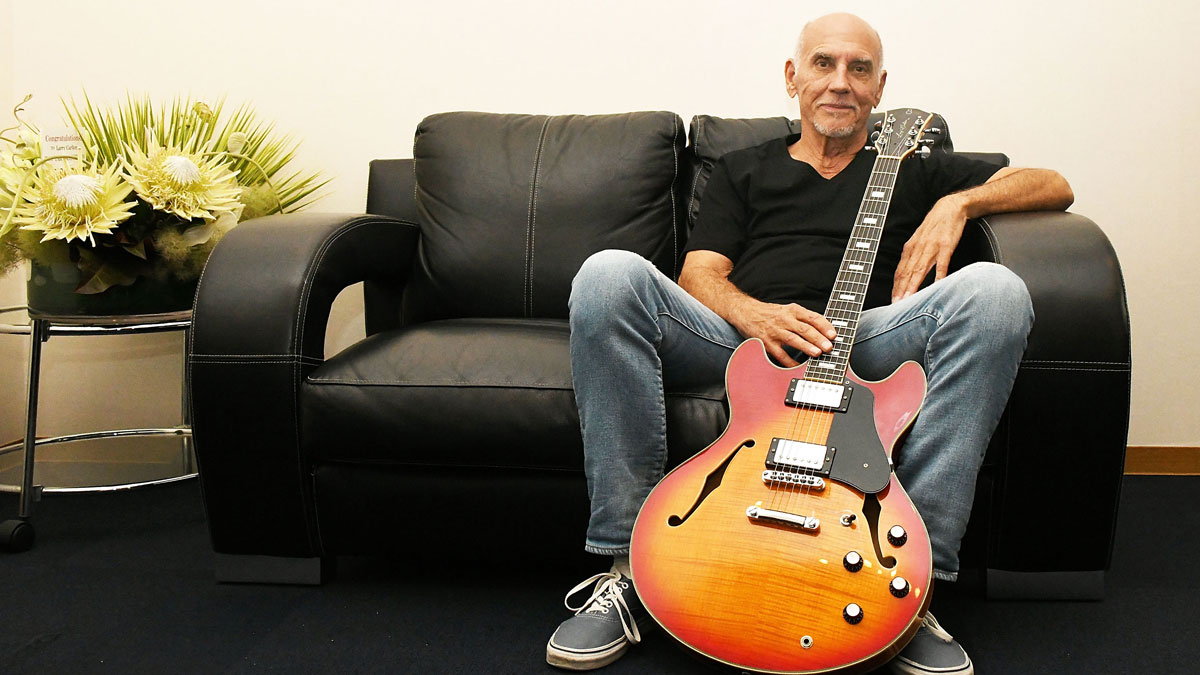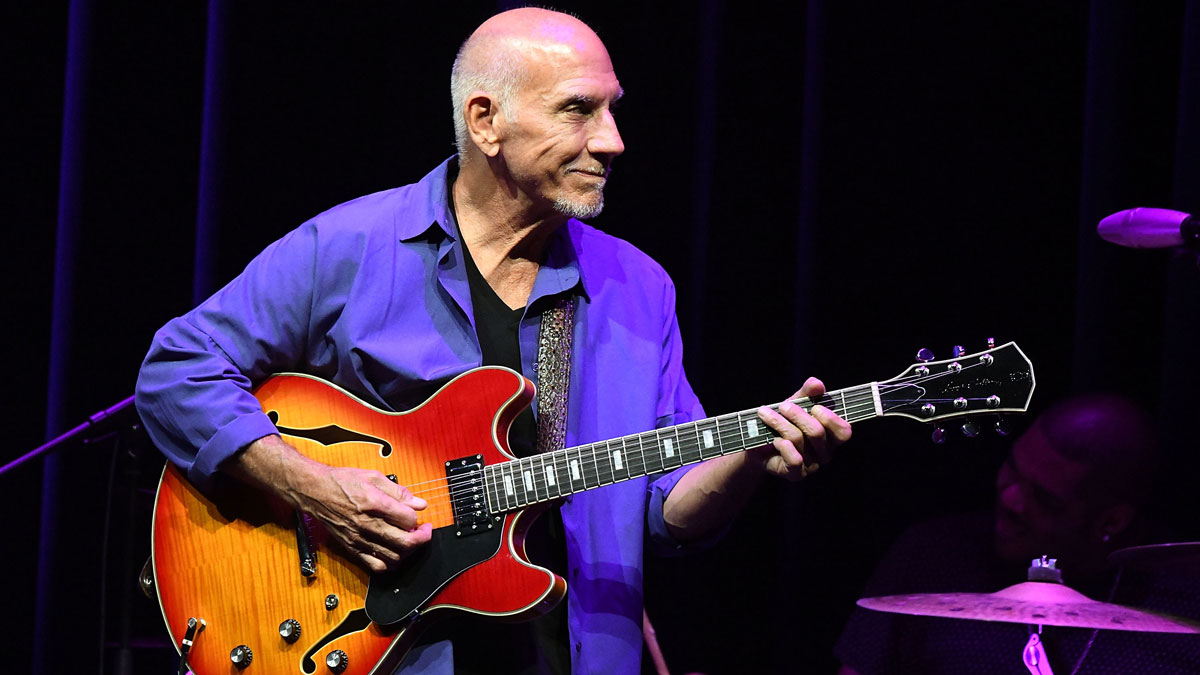Larry Carlton: "I believe my Sire line is better than anything Fender's Squier line is producing. These are great guitars, and I believe in them"
The jazz great explains why he made the switch from Gibson to produce his own range of affordable guitars, based on his iconic vintage instruments

When it was announced that longtime Gibson endorsee Larry Carlton was rolling out a signature line with Sire, the guitar world's collective eyebrows were undoubtedly raised.
After all, Carlton had recorded countless iconic records with his '69 Gibson ES-335. And, of course, Carlton has been known to deploy a raft of other vintage six-strings, specifically a gorgeous blonde '51 Telecaster. So, after all these years, why has Carlton put down his vintage axes for budget-friendly Sire models?
"In short, my contract with Gibson was up," Carlton tells me. "And the truth is, the ES-335 model by Gibson is pretty inconsistent. You have to be careful about them. They're very different than my '69, which was frustrating. I remember going to Europe and playing versions by other companies, which inspired the idea with Sire."
"Long story short," Carlton continues. "Sire approached me, and it seemed like the perfect time for me to make a move. The beauty of the whole thing with Sire is the greater attention to detail. When they approached me, they gave me seven guitars made in Korea for me to evaluate before we met, and I have to say, the quality was just unbelievable. Ultimately, I wanted to provide a guitar to people at a reasonable price to match the larger brands' quality."
Of course, after spending decades with the guitars that would ultimately make him famous, to be sure, gallons of blood, sweat, and tears went into crafting a line of guitars that would match the standard he's set.
When asked how he and Sire crafted a guitar that matched the firepower of his '69 ES-335, Carlton says: "In order to get the Sire guitars close to my Gibson, I sent Sire my '69 to model the new line after. And they did their homework, creating what I feel is an incredible line of guitars.
"For instance, there's a B-flat chord stretch from the sixth fret on the low E string to the first fret on F with a specific feel. If I can't make that chord happen, the guitar isn't for me. With the Sire guitars, I can make that chord happen. That's how great of a job Sire did with these."
Get The Pick Newsletter
All the latest guitar news, interviews, lessons, reviews, deals and more, direct to your inbox!
The fact remains, though, that a new Gibson ES-335 retails for around $3,500-4,000 while a Sire Larry Carlton H7V lists for around $705-769 at the time of writing. And while concessions had to be made, there were certain specifications that Carlton wasn't willing to bend on.

"Until recently, Sire had been using ebony fingerboards, Carlton reminds me. "And the early models of my signature guitars did have those. But I had always used rosewood, and I liked ebony, but they're a little softer and a bit brighter. So, I preferred rosewood, so we've worked out within the last year or so to have all my guitars produced with rosewood fingerboards."
Beyond his '69 ES-335, there's the matter of Carlton's iconic '51 Fender Telecaster. Yet another guitar that Carlton has used on countless recordings over the years. Once again, a Fender Tele with the pedigree of Carlton's will cost you thousands. But Sire's T3 Tele only lists at around $399. And while Carlton’s '51 Tele's heart and soul had reportedly been transferred into the T3, could it match its guts and grit?
"With the Tele, the biggest thing for me was capturing the unique tone of that guitar," Carton reveals. "Because with that Tele, the tone of that thing is pretty identifiable. But still, it's a Tele and a Tele needs to sound like a Tele, and first and foremost, it was essential to have pickups that translate that tone. It was challenging, but Sire did an excellent job of getting the T3 guitars in the arena sound-wise, as you'd expect from an early '50s Tele. While you can't compare them to a 60-70-year-old guitar, that wasn't the goal. The goal was to ensure that the feel and the vibe were there."
Still, considering that Carlton has spent a lifetime playing Gibson and Fender guitars, one has to wonder if some adjustment had to be made when switching over to the Sire. And make no mistake, Carlton took these guitars out on the road, and he absolutely plays Sire guitars live.
Pondering his switch and the efforts that went into his transition as a Sire artist, Carlton quipped: "Honestly, there wasn't any adjustment at all for me. These guitars are high-quality, and I think that I'm out on tour with them proves that. Beyond that, I'm at a point in my career where I want to give back. I've been fortunate enough in my career to have access to the best instruments, but not all those who play guitar are so lucky."
"To be able to do this for people, I'm excited," Carlton enthuses. "I can't tell you how cool all of this is. Sire has come a long way. Their quality control is top-notch, and they have their own production. There's no changing of hands and having other people finish the job. I've heard about other companies doing things like this with artists, and the result was an instrument that doesn't sound good. Or not good enough, at least. Sire took this just as seriously as I did. That's why this worked."
No one expects Sire to make guitar fans forget about the iconic nature of Larry Carlton's '69 ES-335, nor do they purport to have exceeded the distinct tonal qualities of his '51 Telecaster. But Carlton's name is indeed etched across the line. Moreover, he's carrying them with him worldwide, allowing them to chime out from stages worldwide.
All I can say is that ever since I got my Sire H7V or my T3, I haven't taken any vintage guitars on the road
Indeed, that must count for something. As for Carlton's old vintage guitars, of course, he still has them. But these days, they're nestled away, safe and sound, at Carlton's home studio. He still visits them while off the road, leaving the dirty work to a line of Sire guitars which he's "endlessly proud of".
"Here's the truth," Carlton insists. "I've played Gibson guitars from the '70s that sounded like shit. I had buddies who knew I played a 335, and they'd come to me and say, 'Hey, come check out my 335; I think it sounds great.' And I'd play the thing, and it wasn't anything special. And it was still expensive."
"All I can say is that ever since I got my Sire H7V or my T3, I haven't taken any vintage guitars on the road," Carlton continues. "Truthfully, there has been no need. Those guitars have served me well for decades, and now it's time for my Sire guitars to do the same. Sire made these guitars based on what I like, which shows."
"I believe my Sire line is probably better than anything Fender's Squier line is now producing," Carlton concludes. "I didn't put my name on a line of guitars just to make money. I did this because I wanted to provide something for people and stand by it. These are great guitars, and I believe in them. From the start, there was no comprise, and there still isn't. That's why they're out on the road with me today."
- For more information on Larry Carlton's Sire signature guitars, head to Sire USA.
Andrew Daly is an iced-coffee-addicted, oddball Telecaster-playing, alfredo pasta-loving journalist from Long Island, NY, who, in addition to being a contributing writer for Guitar World, scribes for Bass Player, Guitar Player, Guitarist, and MusicRadar. Andrew has interviewed favorites like Ace Frehley, Johnny Marr, Vito Bratta, Bruce Kulick, Joe Perry, Brad Whitford, Tom Morello, Rich Robinson, and Paul Stanley, while his all-time favorite (rhythm player), Keith Richards, continues to elude him.
“There’d been three-minute solos, which were just ridiculous – and knackering to play live!” Stoner-doom merchants Sergeant Thunderhoof may have toned down the self-indulgence, but their 10-minute epics still get medieval on your eardrums
“There’s a slight latency in there. You can’t be super-accurate”: Yngwie Malmsteen names the guitar picks that don’t work for shred



![A black-and-white action shot of Sergeant Thunderhoof perform live: [from left] Mark Sayer, Dan Flitcroft, Jim Camp and Josh Gallop](https://cdn.mos.cms.futurecdn.net/am3UhJbsxAE239XRRZ8zC8.jpg)







